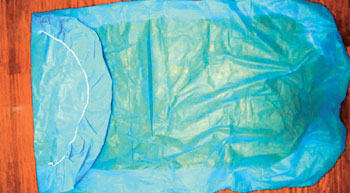
Disposable medical supplies’ demand to go up
Demand for disposable medical supplies in the US is forecast to expand 4.2 percent annually to $54.1 billion in 2020
Demand for disposable medical supplies in the US is forecast to expand 4.2 percent annually to $54.1 billion in 2020. A rise in patient activity caused by aging population patterns, an increasing incidence of medical conditions, and the extension of health insurance coverage by the Patient Protection and Affordable Care Act will promote gains. An elevated focus on infection prevention throughout the healthcare community will also boost demand. These and other trends are presented in Disposable Medical Supplies, a new study from Freedonia Group.
Drug delivery and related products will remain the largest and fastest expanding group of disposable medical supplies based on growth in the number of patients who need surgery or long-term therapy. Total demand posted by this product group is forecast to rise 4.9 per cent annually through 2020. Analyst Bill Martineau notes that, “Safety-enhanced devices for the minimally invasive delivery of parenteral medicines, inhalation therapies, and IV solutions will lead growth.†Disposable wound management products are projected to post demand of $12.1 billion in 2020. Polymeric tissue sealants, along with alginate, foam, and collagen wound dressings, will realise the fastest gains based on enhanced safety and faster healing properties. On the other hand, demand for bandages will expand at a below average pace due to limited pricing flexibility and the overall lack of proprietary types. First aid kits will fare the best among other disposable wound management products, benefiting from trends promoting self-treatment. Conversely, advances in less invasive surgery and tissue sealants will weaken the overall US market for traditional suture and staple wound closures.
Nonwoven medical disposables will see above average growth in demand. The heightened focus on infection prevention in the healthcare sector will boost consumption of single-use, high value-added nonwoven garments and textiles by hospitals and outpatient facilities. A rising prevalence of bladder control problems attributable to the aging population will impact favourably on retail and institutional sales of nonwoven incontinence goods. The best growth in demand among other disposable medical supplies will occur in products with enhanced infection prevention, performance, and/or cost containment benefits.



